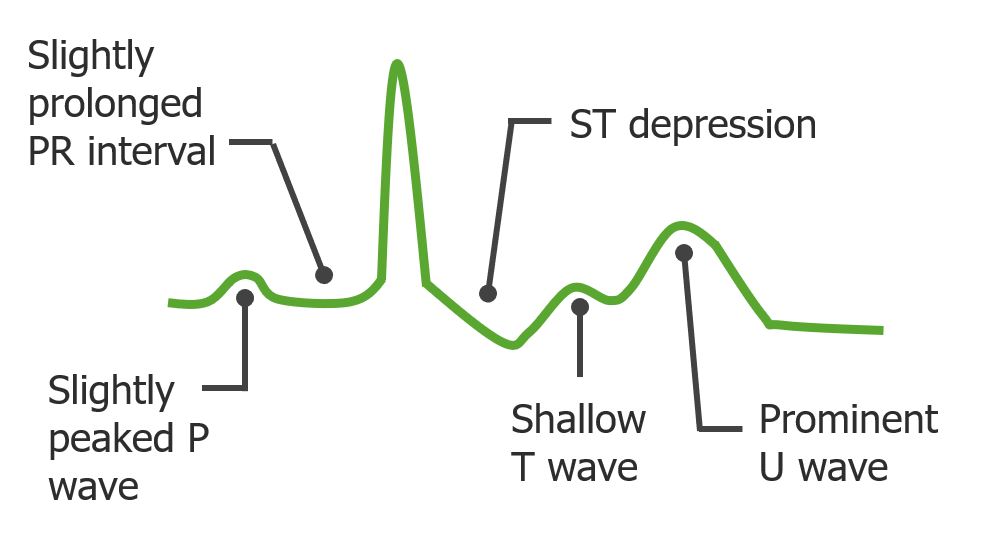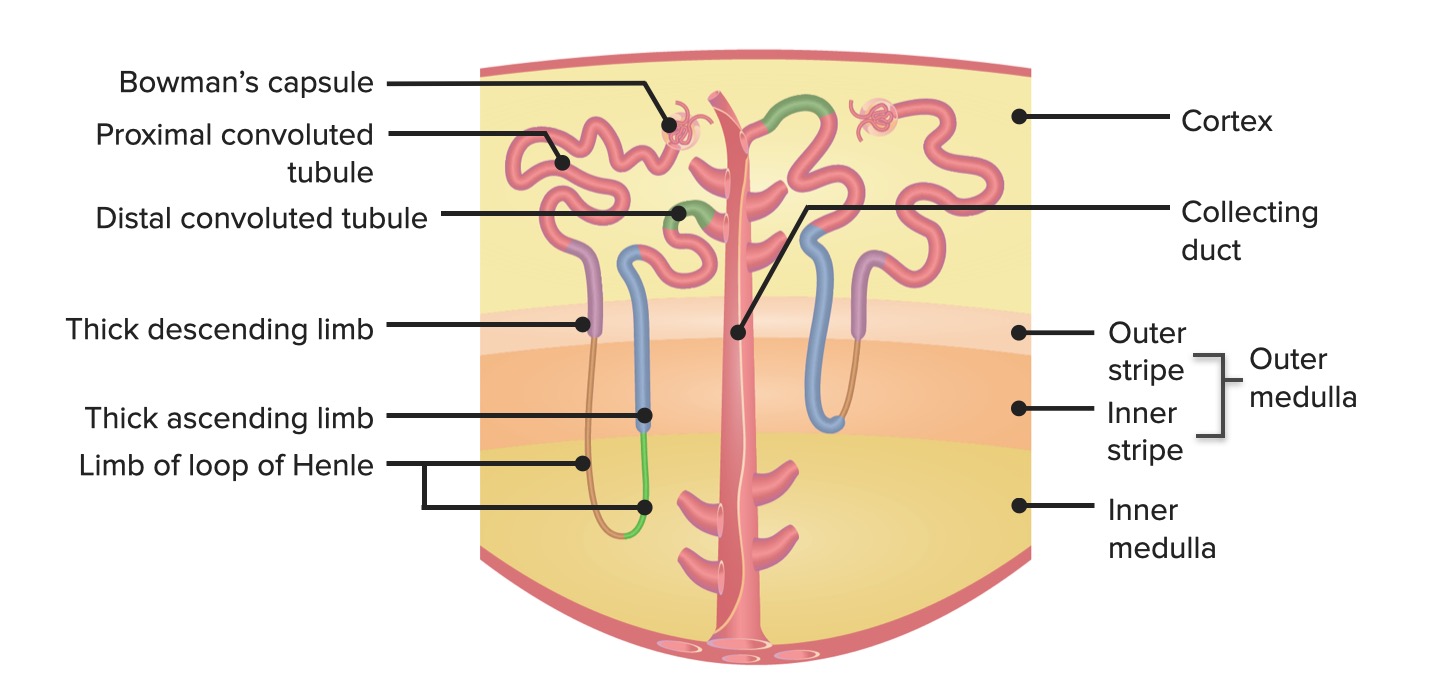Playlist
Show Playlist
Hide Playlist
Renal Case: 22-year-old Woman Complaining of Weakness
-
Slides Potassium Disorders Hypo and Hyperkalemia.pdf
-
Reference List Nephrology.pdf
-
Download Lecture Overview
00:01 Let's go to our next case. 00:03 We have a 22 year old woman who presented to her primary care provider complaining of weakness. 00:07 Her exam is significant for a blood pressure of 105 over 70. 00:11 Her laboratory evaluation demonstrated a potassium of 2.9 milli equivalents per liter. 00:16 Her serum bicarbonate was 14 and we can see the normal is between 22 and 25. 00:23 A potassium to creatinine ratio was 12 milliequivalents per gram. 00:28 So the question is what is the most likely etiology of this woman's hypokalemia? Let's again go through our diagnostic algorithm to see if we can figure this out. 00:38 So our first step we want to check the acid-based status. 00:42 Is she alkalimic or is she acidemic? She has a serum bicarbonate of 14, so she has an acidosis. 00:48 So I'm already thinking potential causes could either be a renal tubular acidosis. 00:52 I cannot on reabsorbable anion or GI losses from the stool. 00:58 So my second step I want to check that potassium to creatinine ratio. 01:02 Here she's actually less than 15 Milli equivalents per gram of creatinine. 01:06 Our kidneys are trying to conserve potassium. 01:09 So this has to be a extrarenal loss. 01:12 So if I think about extrarenal losses in association with a metabolic acidosis, then I really think about stool losses. 01:19 So in this particular setting this patient likely has two losses and she could have potential laxative abuse.
About the Lecture
The lecture Renal Case: 22-year-old Woman Complaining of Weakness by Amy Sussman, MD is from the course Potassium Disorders: Hypo- and Hyperkalemia.
Included Quiz Questions
Which of the following is associated with laxative abuse?
- Blood pH < 7.35
- Potassium-to-creatinine ratio > 15 mEq/g
- Elevated blood pressure
- Serum bicarbonate > 25 mEq/L
- Serum potassium > 5.2 mEq/L
Customer reviews
5,0 of 5 stars
| 5 Stars |
|
5 |
| 4 Stars |
|
0 |
| 3 Stars |
|
0 |
| 2 Stars |
|
0 |
| 1 Star |
|
0 |





